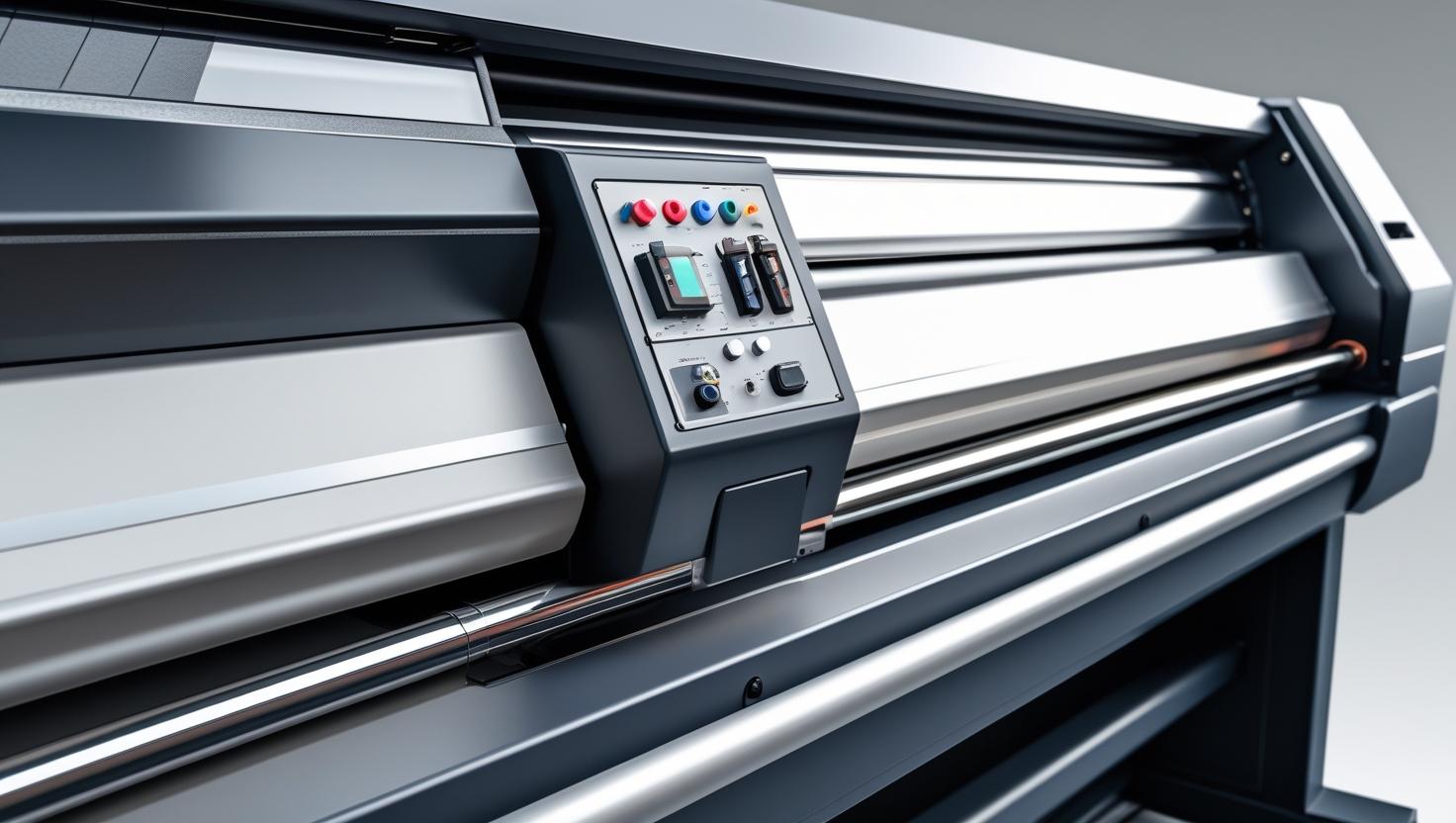The large format printing industry, long known for its applications in signage, architecture, textiles, and advertising, is undergoing a profound transformation. Artificial Intelligence (AI) and automation are reshaping the way printers operate, bringing unprecedented levels of efficiency, precision, and customization to the forefront. As the demand for faster turnaround times and sustainable printing practices rises, AI-driven solutions are proving to be a game changer for both print providers and end users.
1. AI-Driven Print Optimization
One of the most significant impacts of AI in large format printing is intelligent job optimization. AI algorithms can analyze print jobs in real-time and adjust parameters such as ink usage, resolution, and media type to maximize quality while minimizing waste.
For example, AI-powered RIP (Raster Image Processing) software can automatically detect the best print settings for a given job based on past performance data. This not only reduces human error but also leads to better color consistency and sharper outputs—essential in applications like high-end graphics, vehicle wraps, and fine art reproduction.
2. Predictive Maintenance and Downtime Reduction
Automation and AI are also minimizing equipment downtime. Modern large format printers equipped with smart sensors and IoT capabilities can monitor internal systems and predict potential failures before they occur.
Through predictive maintenance, service teams can proactively address wear and tear on critical components—such as print heads, ink delivery systems, and motors—resulting in fewer unplanned halts and lower repair costs. This leads to increased uptime and higher productivity, especially vital for high-volume commercial printers.
3. Workflow Automation and Integration
AI-powered software is streamlining end-to-end workflows in print shops. From order intake and file preparation to job scheduling and final output, automation is reducing the need for manual intervention at every stage.
Key benefits include:
- Faster turnaround times
- Consistent job quality
Easier management of complex, multi-material print jobs
Integration with web-to-print platforms and MIS (Management Information Systems) further improves operational efficiency, enabling printers to handle more jobs with the same resources.
Download PDF Brochure @
https://www.marketsandmarkets.com/pdfdownloadNew.asp?id=523

4. Smarter Color Management
Accurate color reproduction is crucial in industries like branding and interior décor. AI-based color management systems can analyze images and automatically calibrate printers for optimal color output across different materials and lighting conditions.
This innovation reduces the need for manual calibration and reprints, ensuring brand consistency and client satisfaction across projects.
5. Personalized Printing at Scale
AI enables mass customization, which was once a costly and time-consuming process. With variable data printing (VDP) and intelligent layout planning, large format printers can now handle high volumes of personalized jobs efficiently—ideal for advertising, event graphics, and retail campaigns.
Automation in design-to-print workflows allows companies to offer tailored products with minimal delays, giving them a competitive edge in the growing personalization market.
6. Sustainability Through Smart Resource Management
Environmental concerns are pushing the industry toward more sustainable practices. AI can help minimize ink, media, and energy consumption by optimizing print settings and material usage.
Some AI tools even recommend alternative layouts or print techniques to reduce waste. Coupled with eco-friendly inks and recyclable substrates, automation plays a key role in creating greener print operations.
AI and automation are no longer optional in the large format printing industry—they are essential drivers of innovation and growth. By improving efficiency, reducing waste, and enabling personalization, these technologies are helping print service providers meet the demands of a fast-paced, quality-driven market.
As adoption increases, we can expect even greater leaps in smart printing solutions, making the large format sector more agile, profitable, and sustainable than ever before.
Frequently Asked Questions (FAQ)
1. What is large format printing?
Large format printing refers to the production of large-scale printed materials such as banners, posters, signs, vehicle wraps, and murals. It typically involves printers that can handle media widths from 18 inches to over 100 inches, used across industries like retail, architecture, and advertising.
2. How is AI used in large format printing?
AI (Artificial Intelligence) is used to:
- Optimize print settings for quality and efficiency
- Automate layout and color management
- Predict maintenance needs to reduce downtime
- Analyze customer data for personalized printing
- Streamline job scheduling and workflow management
3. What are the benefits of automation in printing?
Automation helps print providers:
- Reduce labor costs
- Minimize errors and rework
- Increase throughput and consistency
- Improve turnaround time
- Enhance sustainability by reducing material waste
